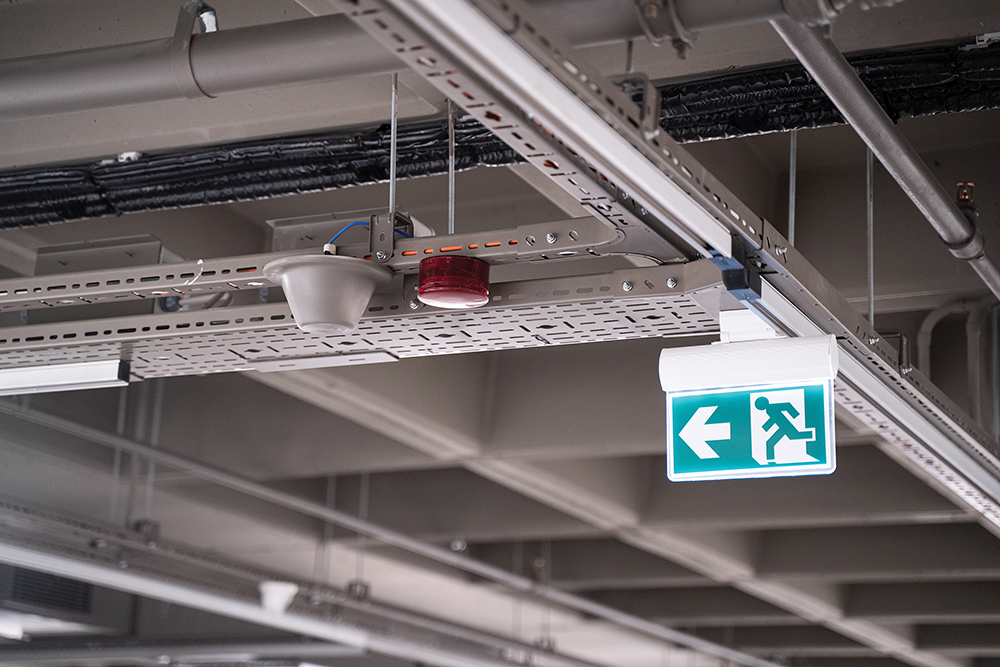Section 18 of the Canadian Electrical Code contains the rules for electrical equipment and wiring in locations where flammable vapours, gases or mists could create a fire or explosion, dusts capable of creating a fire or explosion or ignitable fibres are present. This article reviews a number of requirements applicable to Class I explosive gas atmospheres when classified in accordance with either the European Zone or North American Division methods of classification.
You may recall that Rule 18-002, Special Terminology defines an explosive gas atmosphere as “a mixture with air, under atmospheric conditions, of flammable substances in the form of gas, vapour or mist in which, after ignition, combustion spreads throughout the unconsumed mixture.” (In other words, you could get a fire or explosion.)
According to Rule 18-000, the Zone system of classification must always be used for new installations where hazardous concentrations of gases, vapours or mists are present in quantities that could create a fire or explosion. Rule 18-000 also goes on to say that we are permitted to continue using the Division system for renovations or modifications to existing facilities that may already have been classified by the Division method. The rules for application of the Division method of classification are found in Appendix J.
When we use the Zone system of classification, hazardous locations are considered those areas containing flammable or explosive gases, vapours or mists. When using the Division system, you may already have noticed a small difference, that the word “mists” is excluded.
The Zone system of classification is arranged into three stages. Rule 18-006 specifies that within a Zone 0, an explosive gas atmosphere is present continuously or for long periods. Within a Zone 1, an explosive gas atmosphere is likely or the location is adjacent to a Zone 0. Within a Zone 2, an explosive gas atmosphere is considered unlikely, may only be present for a short time or be located next to a Zone 1 unless prevented by positive-pressure ventilation.
The Division system of classification is comprised of only two Divisions. Rule J18-006 specifies that within a Class I, Division 1 location, an explosive gas atmosphere is likely to occur continuously, intermittently or periodically. Within a Division 2 location, an explosive gas atmosphere is unlikely, present for only a short time or located next to a Division 1 location unless prevented by positive-pressure ventilation.
You may have noticed that the Zone 2 and Division 2 classifications are identical, but that Zone 1 and Division 1 are somewhat different. That’s because the Zone system has an extra category, Zone 0. Only intrinsically safe wiring and equipment may be located within a Zone 0. Intrinsically safe circuits are protected by intrinsically safe barriers and do not have sufficient energy to ignite the flammable or explosive substances within a Zone 0.
As an example, an electric lighting or motor circuit could not be located within a Zone 0, only measurement, control or communication circuits. The explosive vapour above the surface of a flammable liquid within an enclosed tank could be a Zone 0. The Division system of classifying Class I locations does not have the same restriction for electrical equipment installations and therefore the requirements are different.
The table shown in paragraph J1.2 of the 2009 Canadian Electric Code contains valuable information on the types of electrical equipment permitted for use in explosive gas atmospheres, classified by either method. Although the wording may seem different, the table shows that identical types of equipment are permitted in Zone 2 and Division 2 locations. The table also shows that Class I, Division 1 types of electrical equipment may be installed in a Zone 1 location but that Zone 1 equipment is not permitted in a Class I, Division 1 location. That’s because that equipment has not been tested and approved for Zone 0, which may be integral to some Class 1, Division 1 locations.
As with past articles, you should always check with the electrical inspection authority in each province or territory for a more precise interpretation of any of the above.










Find Us on Socials